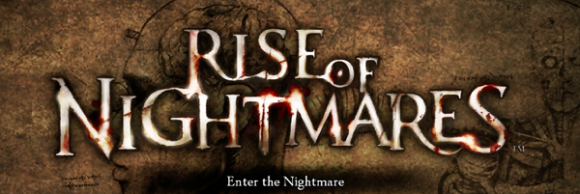
The Kinect had an interesting year in 2011. Widely acknowledged as the ‘winner’ of the semi-pointless gadget war between it and the PlayStation Move, the Kinect went on to emulate the Wii Remote. This meant that the X360 market was hit with countless collections of mini-games, a few inane dance titles and Child of Eden (AKA the reason to own a Kinect).
Enter Rise of Nightmares, both onto the market and into my heart.
You have to admire SEGA’s determination in pursuing the thankless task of funding serious games in areas where the target audience really don’t care. You would have thought that, after Madworld failed to inspire people and House of the Dead: Overkill was virtually stillborn, the publisher might have been a little more hesitant to try another motion-controlled game. But no, Rise of Nightmares is a melee-based, first-person horror game for the Kinect.
The whole of the game is set in Romania, primarily in a castle/mansion that a group of unfortunate passengers from a derailed train end up coming across. As the protagonist, it’s down to you to unravel the mysteries of the edifice and its sinister owner.
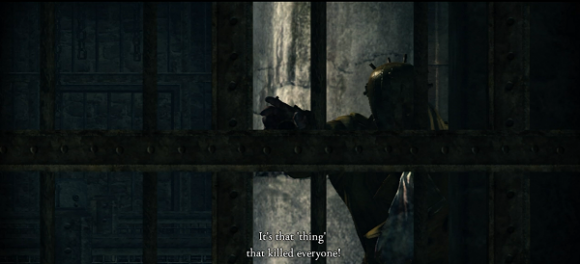
Mechanically, RoN is extremely ambitious. The halls and rooms that comprise the manor are crude and the layout is linear enough that I could imagine them making it an on-rails fighter (although in its current guise there are enough nooks and crannies to explore, if you are patient). It would have been simple enough to just guide the player from one routine encounter to the next. Instead, RoN gives the player free-form movement. This requires the player to stand in front of the Kinect and place one foot further forward to start walking in the game, then tilt their shoulders left and right to turn. These motions take a lot of getting used to and they never quite feel fluid, but ultimately, they work – and a lot better than I imagined they would. Even so, the developers clearly realised that these gestures might not be everyone’s idea of fun and have helpfully included an auto-pilot feature that will automatically move you to the next encounter. This cleverly means that any over-reliance on this feature will result in the player missing out on hidden content and secret weapons.
The combat sections and situation-specific actions are more entertaining and better realised than the movement controls. The combat consists of a frenzied series of punching and slashing movements that isn’t always as responsive as it could be, but is nevertheless enjoyable. The game allows you to target various enemy appendages and lop them off, with that strategic element becoming more important on the harder difficulties. The selection of weapons is good and varied, with meat hammers caving in skulls and chainsaws grinding up corpses; there’s also an arcane twist near the end of the game that mixes it up even further by adding the ability to pull off ranged attacks and which helps the gameplay avoid becoming too repetitive. On top of that, the situation-specific moments provide a welcome break to all the travelling and combat by providing a series of mini-challenges. You might have to balance on a beam, search through a pile of skulls for a key, or tip-toe past an enemy. For the most part, these mini-challenges work nicely, with only a few of them being a little awkward to play due to the limitations of the motion controls. Fortunately, these actions are rarely repeated, so you don’t have to worry about that same annoying stealth section cropping up over and over again during your progress through the game.
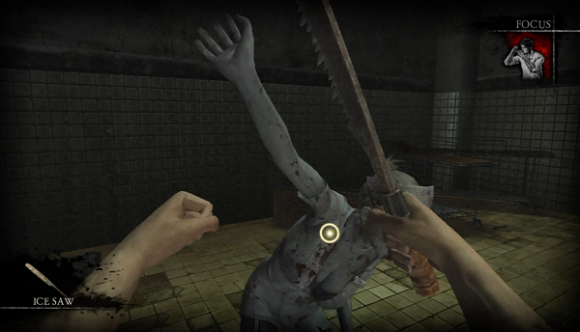
Unfortunately, pretty much all of what I’ve described comes with the same caveat, and the truth is that Rise of Nightmares is far from perfect when it comes to the controls. There are certainly points in the game where everything descends into a jerky mess as the game starts to interpret every tiny gesticulation as a command to move and has your character slowly, inexorably march into some spikes.
The story is also suitably laughable and, after only 10 minutes of the game’s story, there is no way you’ll be able to keep a straight face at the dialogue. There are definite echoes of the House of the Dead games as opposed to titles like Fatal Frame or Sirens.
Ironically it’s all of the things that the game attempts to move away from that end up proving its strengths. Rise of Nightmares strives to be a serious single player experience on the Kinect, something different from the collections of mini-games and colourful party experiences. However, if you choose to play the game solo then there are large sections of the game that will give way to frustration. The checkpointing is generally solid but there are some scenes that, even on the easiest setting, will have to be repeated more than once – and the walk animation is so slow that trawling through them a second or third time can seem like a chore.
Played in the style that Arcadian Rhythms opted for – 3 or 4 people drinking beer and taking turns – is how Rise of Nightmares actually ends up shining.
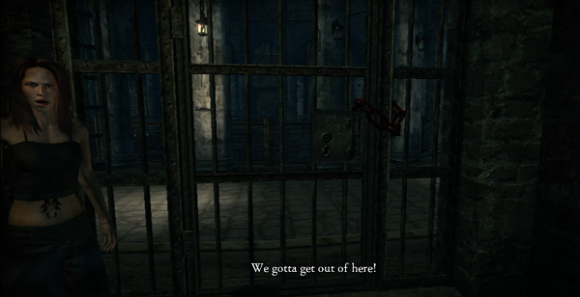
The communal nature of the Kinect feeds into the game’s silliness. Instead of screaming at the game when it dumps you into a trap, you laugh and pass it on to the next person to attempt. After a few beers, WKDs or bitter shandies the bad dialogue is a cause of celebration rather than contempt.
It doesn’t matter that the experience as a whole is not particularly absorbing and that it will probably only last about 7 hours. As a social outing it works just as well as Dance Central, with its straight-faced attempt at a ‘real’ game meaning that you really don’t care about how stupid you look while playing it. In some ways, the crummy lines and muddy visuals feed into that: it again doesn’t matter if you look stupid because the game does too (I am projecting that last sentiment on to RoN as I’m pretty sure it wasn’t the game’s intention).
Rise of Nightmares is both a great Kinect product and an awful one; succeeding mainly in spite of itself. It so desperately wants to take the Kinect toe-to-toe with a more conventional controller-based survival horror title and, in turn, be a real game. It is neither of those things, however, because a) it would’ve probably played better with a controller and b) it really isn’t very scary. Played in the ‘right’ way, and in the manner that most Kinect games are supposed to be played, it transforms into an utterly beguiling playthrough of smashing virtual skulls, laughing at lines of dialogue such as “bucks like a Shropshire pony” and giggling at the weird gestures that your friends make while playing.
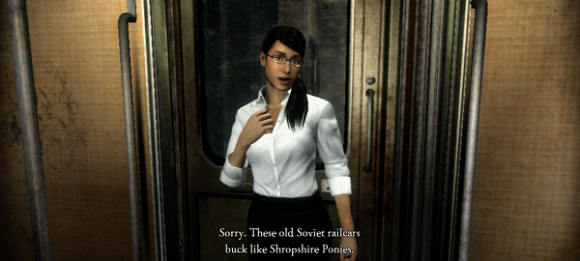
So, even though things most certainly go wrong with Rise of Nightmares, it might actually be for the best.
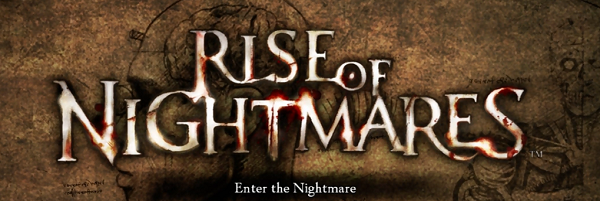
Comments
12 responses to “Rise of Nightmares: Review”
No one can see me, but I am repeatedly patting myself on the back for the tagline "A Rise of Nightmares or Sweet Dreams and Morning Glory?"
Sorry to be so self satisfied, I can't help it.
SEGA announced in their finanfial results 'disappointing' worldwide sales of 200,000 copies. I think that's fairly impressive for such a niche title but obviously wouldn't be enough to recoup their costs. I can see it being slow burner though, I expect it to have a longer shelf life than other 'B' titles, maybe has something to do with the huge disparity between the metacritic critic and user scores… it seems that regular people are having fun with the game despite the low review scores.
As for myself, I like the game so far although I haven't played much because it does get a bit frustrating sometimes playing alone. I'll take your advice and try out the 'bunch of mates + beer' mode next time ;)
I can understand why they might be considered disappointing seeing as there are supposed to be over 7 million Kinect sensors out there. At the same time, I think that SEGA failed to appreciate (as mentioned in the article) that most of the people who bought a device don't want to play that sort of game.
Glad you are enjoying the game, believe me, if you can get your housemates involved it will be way more fun. Also, knock down the difficulty to the easiest setting if you are getting frustrated.
Sounds charmingly bad. A "survival horror" game you play on a device that lends well to social gaming. I can very much see how the beer and company (mostly the beer) would help. I really like how the review emphasizes that discrepancy because the game makes sense in that context, even though it probably shouldn't. Enjoyed this.
Thanks for the kind words Alex. That was definitely the gist I was going for in terms of the contradiction that Rise of Nightmares presents. I am definitely thinking about replaying it too. I had to go through the first few areas for screenshots and there was a surprising amount of content hidden away in corners that I hadn't noticed the first time round.
I hope that there will be more games like this for the Kinect as playing through it was an enormous amount of fun. So far I have two reasons to buy a Kinect: Child of Eden and Rise of Nightmares. But I will need a few more reasons before I commit… get on it, Microsoft!
Haunt looks like fun, so does Leadmees (or whatever), I am also curious in this game by Double fine:
http://www.giantbomb.com/quick-look-ex-double-fin…
Going to try to get my housemates to join in on this.
Wow, that looks pretty awesome. I was unsure until they mentioned that it was an 800msp XBLA title. Double Fine wins again.
What kind of enemies do you fight in this game? I find that many recent horror games or flicks fails at horror by using zombies you see as enemies, instead of using horrors you glimpse at and fear at every corner. My two cents: keep zombies in action games. Get someone creative for scary ones.
The majority of the things are zombies, when the game does try to set tension it is undermined by the plodding pace of the walk animation… And in my case because there 4 other people talking in the room.
Is this game easier or harder to control than a Shropshire Pony? Are horror games ready to put the players into the hooves of a pony? Are ponies good at playing survival horror games?
In order:
a) Yes
b) No
c) Given a few beers: Yes